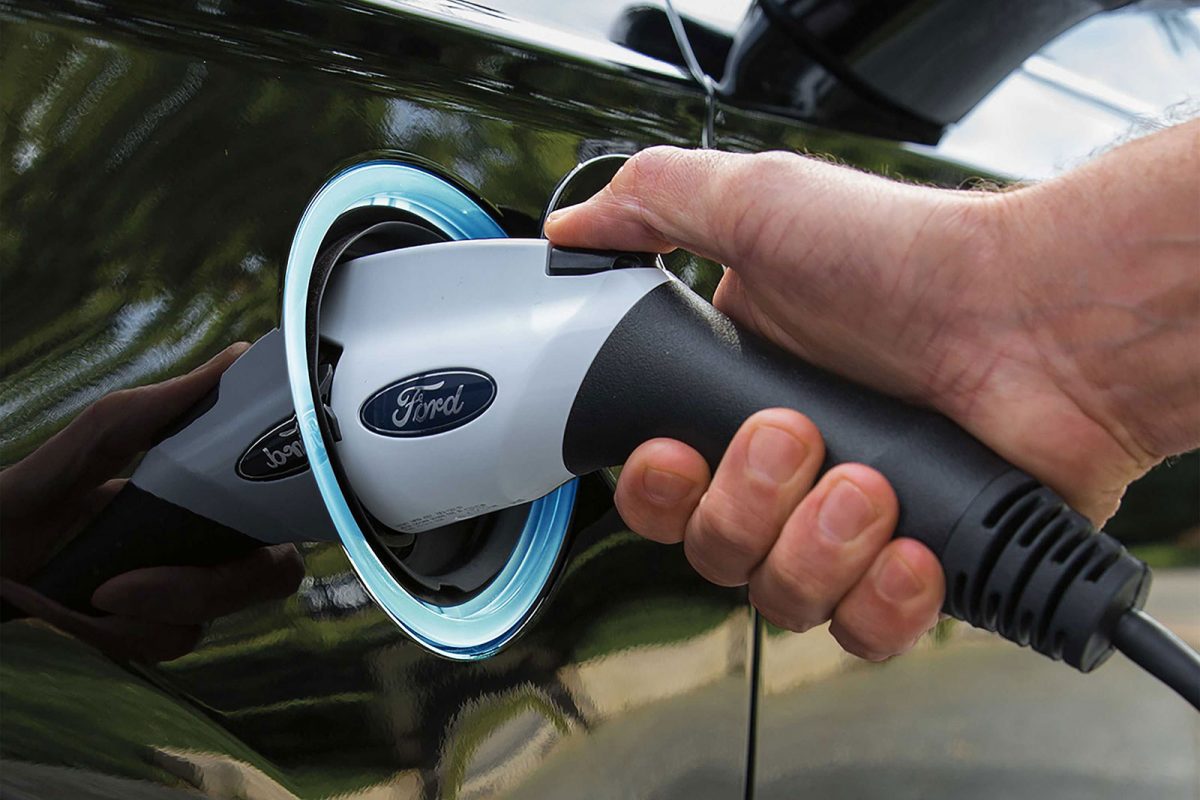Ford’s Future: A cut to conventional engine development funding of 30% to be invested into electric EV technology

New CEO Jim Hackett has presented his vision of Ford’s future. The plan is to make Ford a “fitter”, leaner more responsive company. With a reduction in the model range and development of conventional passenger cars Ford plan to free up capital to invest in their profitable SUV and truck division plus their recently announced “Team Edison” to speed development of electric vehicles.

Ford CEO Jim Hackett
From an electric vehicle perspective there were a few interesting points such as Ford reducing internal combustion engine capital expenditures by one-third and redeploying that capital into electrification, a plan to deliver 13 new electric vehicles in the next five years and the development of a new line of low-cost all-electric passenger vehicles in China. Here some of the presentations highlights.
- Accelerating the introduction of connected, smart vehicles and services customers want and value. By 2019, 100 percent of Ford’s new U.S. vehicles will be built with connectivity. The company has similarly aggressive plans for China and other markets, as 90 percent of Ford’s new global vehicles will feature connectivity by 2020.
- Rapidly improving fitness to lower costs, release capital and finance growth. Ford is attacking costs, reducing automotive cost growth by 50 percent through 2022. As part of this, the company is targeting $10 billion in incremental material cost reductions. The team also is reducing engineering costs by $4 billion from planned levels over the next five years by increasing use of common parts across its full line of vehicles, reducing order complexity and building fewer prototypes.
- Allocating capital where Ford can win the future. This starts with the company reallocating $7 billion of capital from cars to SUVs and trucks, including the Ranger and EcoSport in North America and the all-new Bronco globally. Ford also has plans to build the next-generation Focus for North America in China, saving capital investment and ongoing costs. Further, Ford is reducing internal combustion engine capital expenditures by one-third and redeploying that capital into electrification – on top of the previously announced $4.5 billion investment.
- Embracing partnerships. Ford will continue to leverage partnerships, remain active in M&A and collaborate to accelerate R&D. The company recently announced it was exploring a strategic alliance with Mahindra Group as it transforms its business in India, and Zoyte with the intention of developing a new line of low-cost all-electric passenger vehicles in China. When it comes to autonomous vehicle development, the company recently announced a relationship with Lyft to work toward commercialization and a collaboration with Domino’s Pizza to research the customer experience of delivery services.
- Expanding electric vehicle revenue opportunities. The company recently announced a dedicated electrification team within Ford, focused exclusively on creating an ecosystem of products and services for electric vehicles and the unique opportunities they provide. This builds on Ford’s earlier commitment to deliver 13 new electric vehicles in the next five years, including F-150 Hybrid, Mustang Hybrid, Transit Custom plug-in hybrid, an autonomous vehicle hybrid, Ford Police Responder Hybrid Sedan, and a fully electric small SUV.
Credit: Ford
